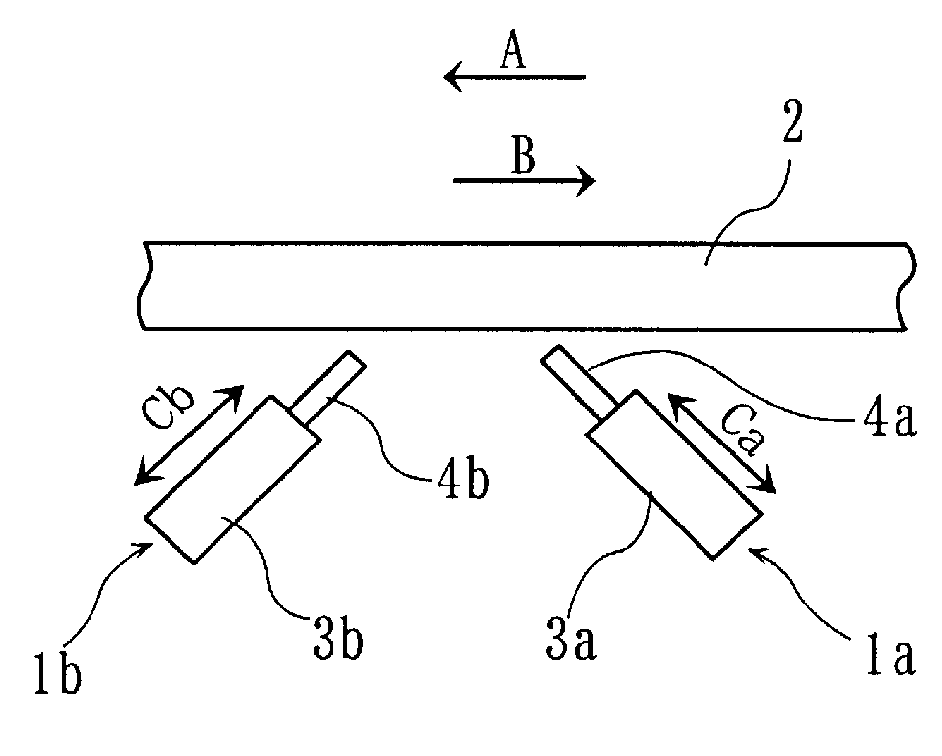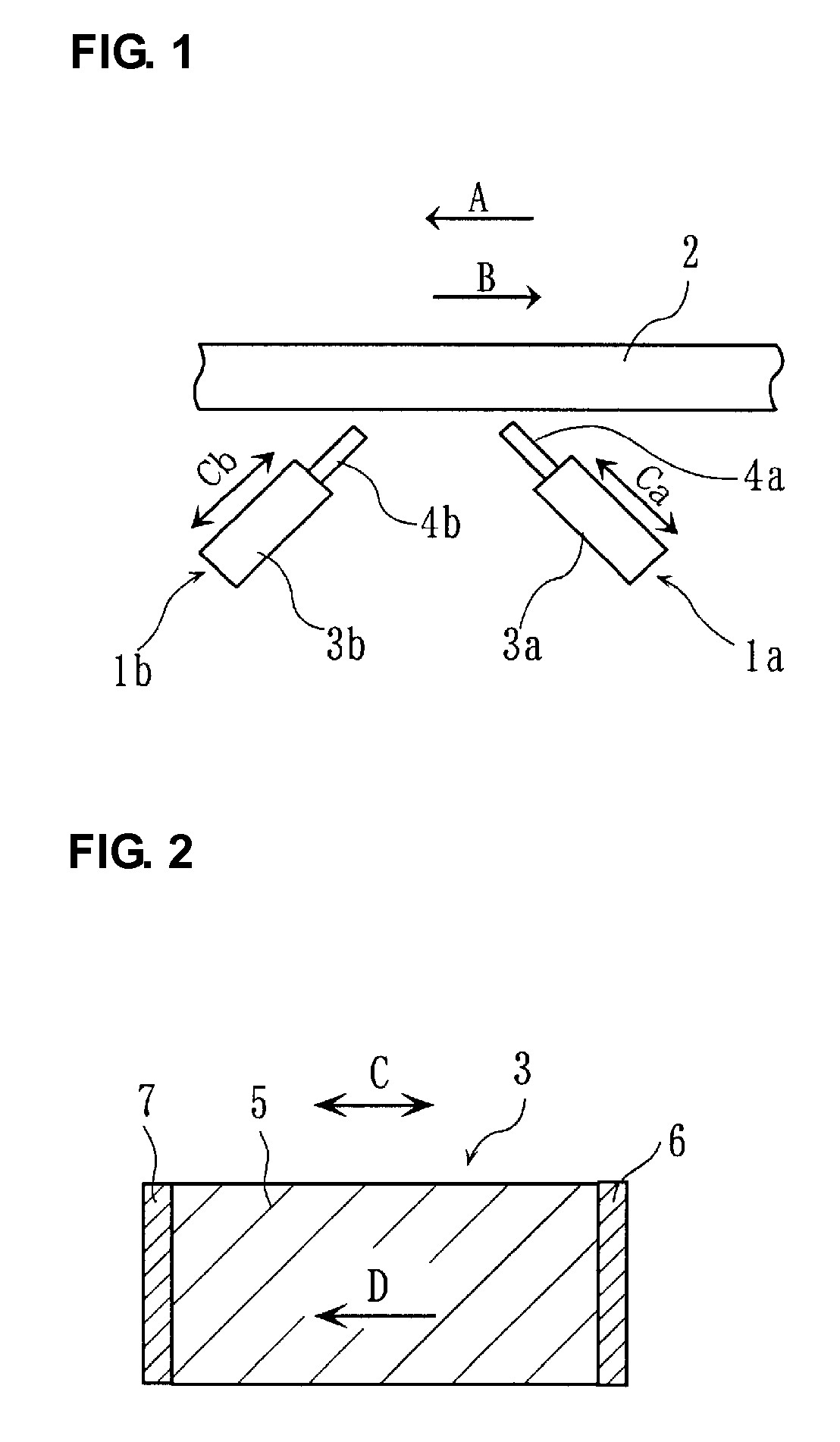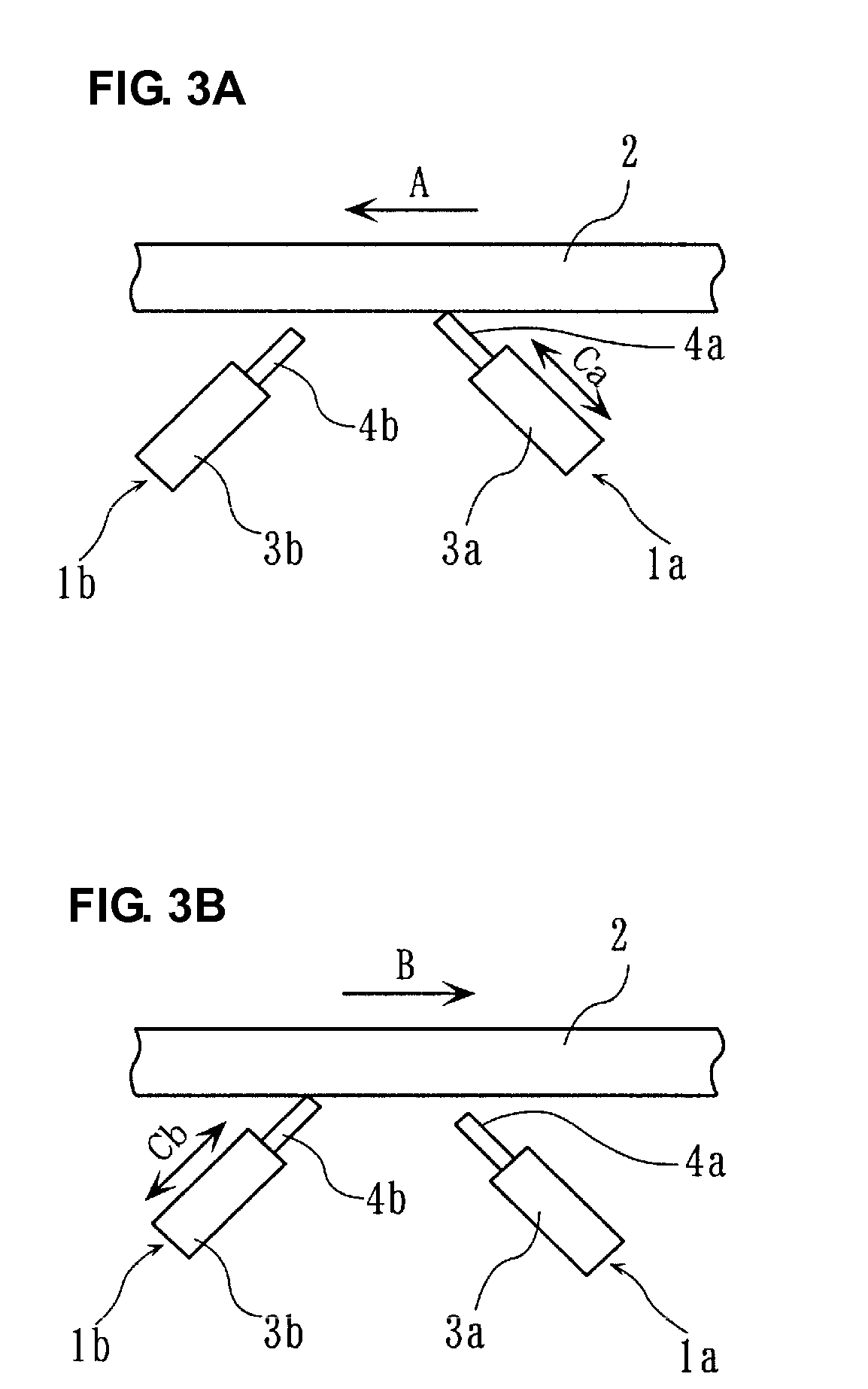Resonant actuator
a technology of resonance actuator and actuator, which is applied in the direction of generator/motor, piezoelectric/electrostrictive/magnetostrictive device, piezoelectric/electrostrictive/magnetostriction machine, etc., can solve the problems of resonance frequency fr reduction, and achieve large saturated vibration velocity, reduce resonance frequency fr and mechanical quality factor qm, and reduce displacement
- Summary
- Abstract
- Description
- Claims
- Application Information
AI Technical Summary
Benefits of technology
Problems solved by technology
Method used
Image
Examples
example 1
[0072]Displacement elements of samples 1 and 2 each having a displacement direction substantially the same as a polarization direction were prepared with a non-oriented Bi2srNb2O9 (hereinafter, referred to as an “SBN”) material, which is a bismuth layered compound, and a c-axis-oriented SBN material were used.
[0073]AS COMPARATIVE EXAMPLE, sample 3 having a displacement direction substantially the same as a polarization direction and sample 4 having a displacement direction substantially perpendicular to a polarization direction were prepared with a PZT material.
[0074]Methods for producing Samples will be described in detail below.
Sample 1
[0075]SrCO3, Bi2O3, Nb2O5, Nd2O3, and MnCO3 were prepared as ceramic materials and measured such That the final composition satisfies the formula {100(Sr0.9Nd0.1Bi2Nb2O9)+MnO}. The measured materials were charged into a ball mill with partially stabilized zirconia (PSZ) balls and water and wet-mixed for about 16 hours in the ball mill to produce a m...
example 2
[0126]Various SBN samples having different degrees of c-axis orientation F were produced, and characteristics thereof were evaluated.
[0127]A calcined powder and plate-shaped ceramic particles were prepared by the same method and procedure as in sample 2 described in “EXAMPLE 1”.
[0128]The plate-shaped ceramic particles and the calcined powder were mixed in different ratios by weight in such a manner that the degrees of c-axis orientation F of sintered ceramic bodies were about 54%, about 75%, and about 95%. SBN specimens of sample 22 (degree of orientation F: 54%), sample 23 (degree of orientation F: about 75%), and sample 24 (degree of orientation F: about 95%) were prepared by the same methods and procedures as in Sample 2.
[0129]The degree of orientation F of each of samples 22 to 24 was calculated by the Lotgering method in the same manner as sample 2 described in “EXAMPLE 1”.
[0130]Non-oriented SBN specimens as sample 21 were prepared as in sample 1.
[0131]The vibration velocity v,...
PUM
| Property | Measurement | Unit |
|---|---|---|
| vibration velocity | aaaaa | aaaaa |
| thickness | aaaaa | aaaaa |
| pressure | aaaaa | aaaaa |
Abstract
Description
Claims
Application Information
 Login to View More
Login to View More - R&D
- Intellectual Property
- Life Sciences
- Materials
- Tech Scout
- Unparalleled Data Quality
- Higher Quality Content
- 60% Fewer Hallucinations
Browse by: Latest US Patents, China's latest patents, Technical Efficacy Thesaurus, Application Domain, Technology Topic, Popular Technical Reports.
© 2025 PatSnap. All rights reserved.Legal|Privacy policy|Modern Slavery Act Transparency Statement|Sitemap|About US| Contact US: help@patsnap.com



